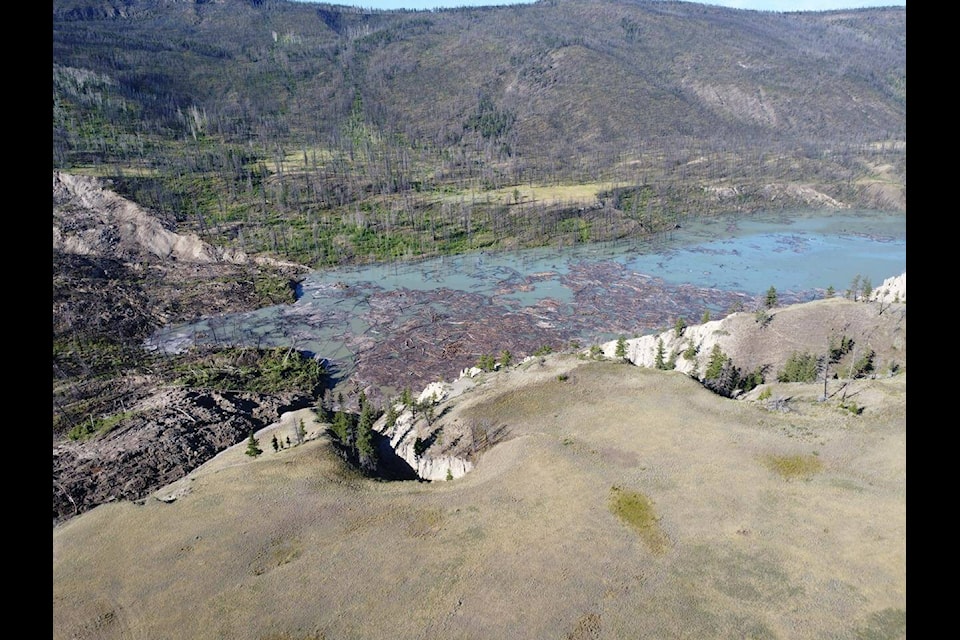Residents might have dodged the worst effects of a slide that temporarily dammed the Chilcotin River, but there could be more to come.
B.C.'s Emergency Minister Bowinn Ma warned of ongoing of slope instability along the river during an update Tuesday afternoon (Aug. 6).
"Yes, when you have a significant amount of water flowing in the way that we see through the Chilcotin, in an area that is very silty and sandy, (with) lots of loose sediments, there is a risk of additional landslides, both below and below the blockage. We have seen this in other parts of the province."
Connie Chapman, executive director of water management in the Ministry of Water, Land and Resource Stewardship, said the river has been under-cutting its banks as dammed up water passes through the slide area. "It will take a little bit of an assessment to fully understand the extent and the scope," Chapman said. "We do need the water levels to continue to recede down to the levels that they were at prior to the event. We got a little bit to go."
Ma said during her update that the various dangers posed by the slide are not yet over. "As mentioned yesterday, the risk of a worst-case scenario has drastically decreased, but we are not in the clear yet."
Water that breached the blockade along the Chilcotin River has now reached the Fraser River, she said. Ma urged to anyone living near both rivers to stay informed and heed any directions from their local municipal government or First Nation.
Water breached the slide at around 9 a.m. Monday (Aug. 5) and the reservoir that had formed behind the dam is currently decreasing at a rate of 2.5 metres per hour, Chapman said. She added that the river's peak flow hit around 3,000 cubic-metres per second at 3 p.m. yesterday afternoon. The flow of water has since then significantly declined, she said. This said, the river's current flow rate through that part of the river system is still three times higher than the average flow during the river's spring run-off.
Water carrying woody debris entered the Fraser River at around 2 p.m. yesterday and is now making its way downstream, Chapman added. But much of this debris has already dropped off and visible debris currently consists of sediment, "which is a positive," Chapman said.
Ultimately, it took the dammed up water about 22.5 hours to reach the Fraser River at Lillooet with a peak flow of 3,700 cubic metres per second. "To put this in perspective, that is just a shy of a three-metre rise in water level and is roughly 1,500 cubic-metres per second less than what we would have seen during a typical (spring run off) season."
Chapman said the rise in the height of the Fraser River will ease as the water moves downstream, adding that the additional water will reach Boston Bar at around 7 p.m. Tuesday afternoon. By that point, the Fraser River will have risen by about 1.8 metres. The water will eventually reach Hope at midnight Tuesday, she added.
Chapman said the Fraser River is expected to have risen by one metre once it reaches Hope before dropping again.
"We aren't quite...out of the woods yet," Ma said. "We have still a few hours left for the water to drain from behind the dam and then we need to take the time to assess how the landscape fared following that event, but I'm extremely grateful that the worst-case scenario did not come to be."
Ma, however, repeated earlier appeals to stay away from both the Chilcotin River and the Fraser River down to Hope. "Slopes and banks may be very unstable...and it remains dangerous," she said.

